Interview: Sam Walton of Hole & Corner
A British magazine that celebrates the kind of quiet, dedicated craftsmanship that rarely gets indulgent editorial


Hole & Corner is a brand new bi-annual print magazine devoted to “celebrating craft, beauty, passion and skill.” Hot off the press, issue one takes a look at how Chris King carefully handcrafts the world’s best cricket bats, profiles young British cheese maker Becky Dyball and documents a day in the life of family-run Dorset millers Stoate & Sons. Also featured is an interview with Spanish artist Lluís Lleó, photos revealing the interior of London’s John Lobb traditional shoemaking workshop shot by Steven Fisher, an insight into the working practice of stonemason Teucer Wilson, plus a series of photo portraits by Philip Sinden of East London clergy. In short, the inaugural issue serves as a glorious celebration of the kind of quiet, dedicated craftsmanship that rarely receives such an indulgent editorial treatment.
We caught up with the magazine’s creative director Sam Walton to find out more about the beautifully produced British publication.
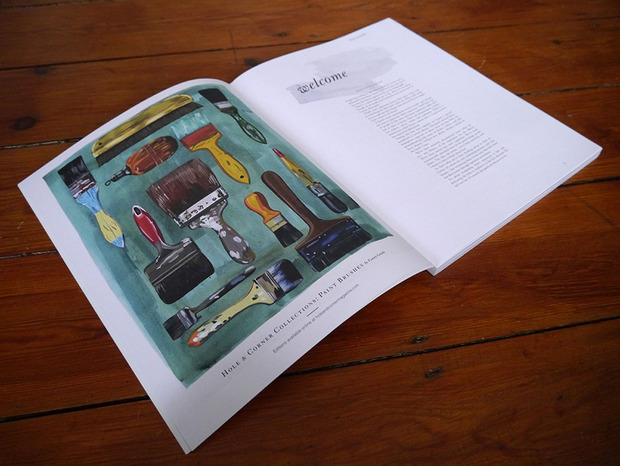
While this is the first magazine that you’ve founded, you’re no stranger to publishing.
Yes, I was in publishing for a long time. I was senior designer at British Vogue for two and a half years, then I worked on Harvey Nichols’ magazine before going to work with Mary Portas for a year. However, about eight years ago I moved from editorial design over to the commercial side of publishing, working with brands and art directing the kind of advertising that appears in fashion and lifestyle magazines. As an editorial designer I felt I was being dictated to by these brands, so decided to get involved in a creative role.
What made you start Hole & Corner?
My family and I moved out of London three years ago—to the countryside in Dorset—and the conversations I was having with people in our new rural community were really interesting to me. I’d find myself talking to a dairy farmer or a guy who works at the local brewery and it was fascinating to hear about problems they were facing, the processes involved in creating products and even the length of time people had devoted to their trade or craft.
I thought that it would be really amazing to work with the talent I’ve been lucky enough to have worked with over the years within fashion editorial and the advertising scene, but to focus on subjects that generally aren’t really reported with any style in the press—probably because they aren’t hugely commercial for magazines.
I’d also been really encouraged and enthused by seeing a number of really great niche publications launched in the last few years. I love Apartmento, Fire & Knives, and I really enjoyed the first few issues of Port and these really inspired me. I’ve worked in publishing a long time, I know some great photographers and I had faith in my ability to pull together a really great crop of talent which a lot of niche magazines don’t have access to or simply can’t afford.
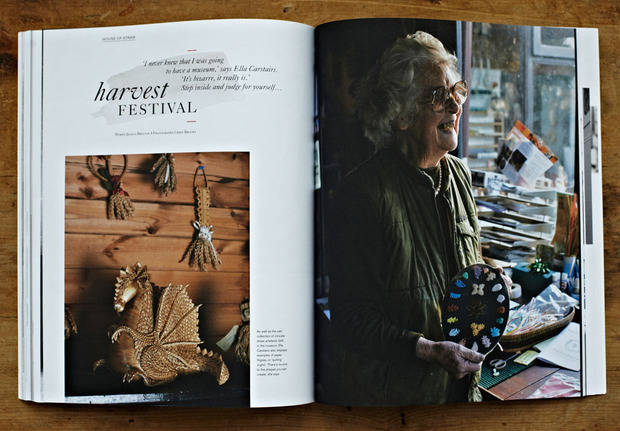
Do you think there’s a cultural shift pushing against the relentless, and ever increasing, speed of digital communications?
I think there is—and not just in publishing. People are signing up to do butcher classes or sit at a potter’s wheel and I think that there is a sense that people want to get back to doing something with their hands that is productive and educational, but which also allows them the time and space to switch off from the pressures of modern life. Also, people are looking for independent provenance now of their food, their clothes, their furniture. They want to know the stories behind the creative and manufacturing processes and are happy to invest in those stories as much as the product itself.
Can you tell us about the name, Hole & Corner?
I stumbled across the phrase in the context of someone ‘living a hole-and-corner lifestyle’—it just seemed to resonate. It seems to have numerous connotations and dictionary definitions but I took it to mean a reclusive, secretive lifestyle or referring to a special place—which felt quite apt in terms of the people we’re interested in featuring who are working, for all intents and purposes, in secrecy. None of them are seeking fame and fortune, but rather quietly going about their business. Also, seeing as it’s a relatively niche title, which won’t have the wide appeal of say a lifestyle title, it felt like a perfect fit.
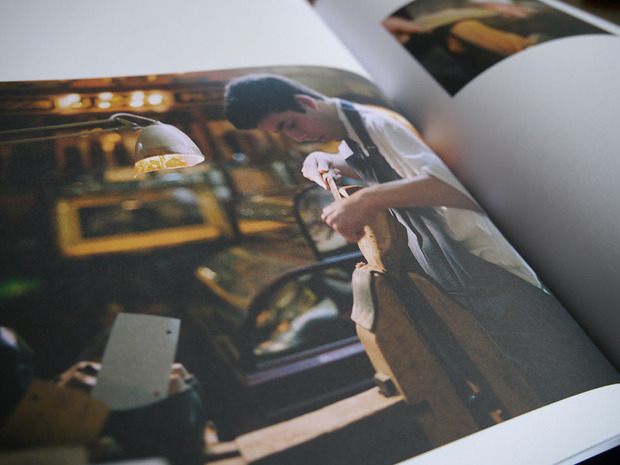
A florist, a shoemaker, a cheese maker, a stonemason, a miller—how have you come across the subjects of issue one?
Well, I’ve met people in my community in Dorset, had chance encounters on my new regular train journey and also sought out a few people I thought were doing interesting things such as Catherine Lock at The New Craftsmen. Catherine spent ten months travelling around the UK to find independent craftspeople for a project they’re doing which is basically bringing crafts together with a retail space in central London to enable visitors to the space to buy, commission and experience wonderful crafted objects that they would otherwise know nothing about. I’m a huge fan of what those guys are doing and Catherine will be contributing regularly to H&C going forward. And, of course, H&C’s editor Mark Hooper has done an invaluable job pulling in great writers and more great content.
Tell us about the relationship between you as creative director and Mark as editor.
I’ve actually known Mark for years. We originally met at Nick Logan’s publishing house Wagadon when Mark was working on Arena magazine and I worked on Frank, which was the women’s version. Mark had moved out of London and, like me, was perhaps getting to see a different side to life so I thought it might appeal to him. Thankfully it did and he was really enthused. He’s been able to bring to the project precisely the high level of quality writing that I felt the magazine and its subjects deserved. For example, he brought on board Richard Benson who used to be editor of The Face, Jude Rogers, Peter Lyle… there are so many great writers in the issue thanks to Mark’s brilliant work. Getting Mark on board was crucial.
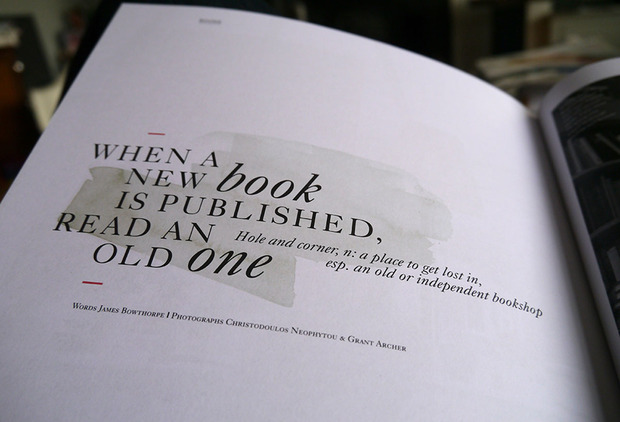
One of the most pleasing and remarkable things about issue one is the distinct lack of advertising. Will you be able to maintain that going forward?
We’re getting that feedback a lot. And while the content of the magazine is about offline endeavours, we understand that digital is key to making the magazine work in the way we want it to. Our focus now is to build an online audience through Twitter and also our website so we can sell as many copies as we can online—because that will reduce the amount of advertising revenue we have to get in. And let’s face it, the proliferation of pages upon pages of advertisements is why so many magazines are quite boring to look at these days.
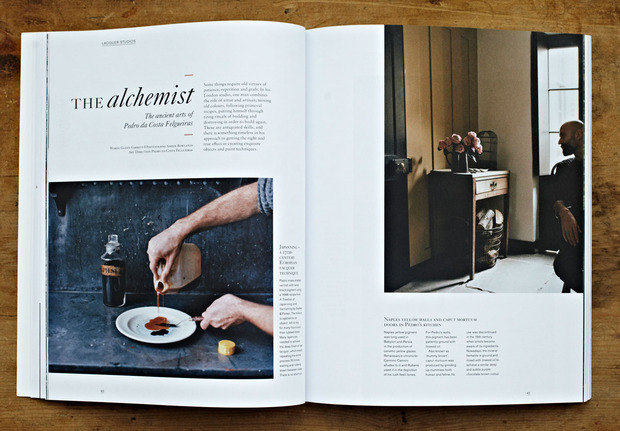
How often will you publish H&C and what have you got lined up for the next one?
It’s bi-annual for now, although we won’t rule out the possibility of it becoming a quarterly—though it would never be more regular than that. For issue two, I’m already working on a piece with photographer Dan Tobin Smith, which should be interesting. Joss McKinley has already shot a new piece for the next issue.
The next thing we need to focus on is populating the website with great content—additional photos from shoots that aren’t in the magazine, short films we’ve made about some of the subjects…I’m also really keen to develop limited edition products with some of these small independent producers and I think the fact that we are able to introduce them to really great photographers so that they can have their work shot really beautifully could be interesting. We’re also working with illustrators to create prints to sell online too. The first two are already available, created specially by Fanny Gentle.
You can now order a copy of Hole & Corner online for £10.
Images of the magazine by Gavin Lucas











